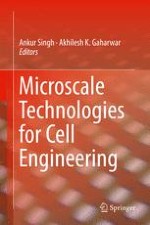2016 | OriginalPaper | Buchkapitel
8. Microscale Approaches for Molecular Regulation of Skeletal Development
verfasst von : Rahul S. Tare, David Gothard, Janos M. Kanczler, Jonathan J. West, Richard O. C. Oreffo
Erschienen in: Microscale Technologies for Cell Engineering
Aktivieren Sie unsere intelligente Suche, um passende Fachinhalte oder Patente zu finden.
Wählen Sie Textabschnitte aus um mit Künstlicher Intelligenz passenden Patente zu finden. powered by
Markieren Sie Textabschnitte, um KI-gestützt weitere passende Inhalte zu finden. powered by
